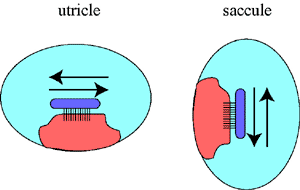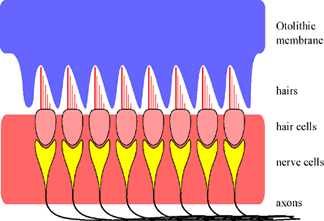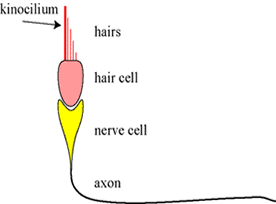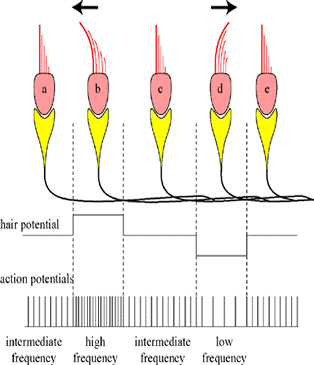A. The Utricle and the Saccule:
1. The Utricle and the Saccule: The utricle and the saccule are fluid-filled spaces. They contain a macula which is oriented in the horizontal direction ( = utricle) or in the vertical direction (= saccule). These two organs therefore detect movements in the horizontal or in the vertical direction. |
|
2. The Macula: The macula is the sensor in these two organs. It essentially consists of a row of hair cells. The hairs are connected to a gelatinous mass called the otholithic membrane. The other side of the hair cell is connected to a nerve. This is the beginning of the vestibular nerve. |
|
|
|



